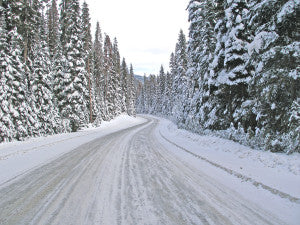
Winter driving has been upon a few areas of the country already this year, but it’s never too late to stock your vehicle with essentials that could be potential lifesavers should you become stuck, stranded, or lost in snowy, sub-zero conditions. A quick, informal survey of our customers turned up these 15 must-haves for a winter safety kit:
1. Blanket or sleeping bag.
This is a no-brainer. A heavy blanket or two will do the job, but many of our truck-driving customers recommend a nice camping-quality sleeping bag for superior warmth. Several of our customers keep a few of our Supreme moving blankets in their trucks since they’re heavy-duty yet washable.
2. Water and food.
Another no-brainer. But what are the best food items to keep in your vehicle? Choose nutritionally dense food that won’t go bad quickly. Jerky, granola bars, and crackers with peanut butter are all good choices. Stash a gallon of water in your vehicle as well.
3. Extra clothing.
A pair of quilted coveralls or an insulated jacket/snowpants combination was also suggested by our truck-driving survey respondents. Even if you’re not an over-the-road trucker, extra socks, gloves, and hats are always smart to have on hand for cold weather travel.
4. Hand warmers.
Battery-operated or air-activated hand warmers can produce heat for up to 24 hours, and are an excellent addition for any emergency kit. These are especially useful if you need to make car repairs in frigid temps.
5. First aid kit.
An inclusive kit is indispensable if you become stranded and basic first aid is needed. The Red Cross recommends that first aid kits contain gauze, bandages, antibiotic ointments, and antiseptic wipes. Stocking up on medical supplies is also a good reminder that the kit should include personal medications and the phone numbers of your emergency contacts.
6. Flashlight with extra batteries.
Look for a large, bright flashlight to keep in your vehicle, and most importantly- make sure it works and you have extra batteries! Lots of flashlights on the market today are multi-functioning, with a radio, cell phone charger, etc. built-in, so it might be worth spending a few more dollars and getting more bang for your buck.
7. Glow sticks.
Glow sticks, or light sticks, can be purchased at department stores, drug stores, and dollar stores. Wearing a glow stick will alert your presence to other motorists or safety personnel.
8. Reflector triangles.
Safety/emergency triangles can be placed in front of and behind your car to alert other drivers. These triangles signal a roadside emergency, and can help keep you and your vehicle safe until you can get back on the road.
9. Jumper cables.
Jumper cables are worth every penny, so invest in a good set. What to look for: heavy-duty steel clamps and an extra-long cable length.
10. Portable power unit.
Portable power units have been around a few years now and continue to improve in quality and durability. The best part about investing in a unit is that it can be used at home in the event of a power outage, or while camping, tailgating, etc.
11. Tools.
Our truck-driving and moving industry customers say they always have a basic tool kit in their emergency winter driving kit. If you’re putting a traveling tool box together, look for tools that are brightly colored to make them easy to find in low visibility conditions. Multi-use tools like a Gerber® tool is also an excellent addition to any emergency kit. Other smart additions: pliers, duct tape, screwdriver, and hammer.
12. Tow strap / recovery strap.
While a tow strap and a recovery strap are known as two separate types of equipment, ours can be used for both towing and recovery. Learn more here: Recovery Straps / Tow Straps.
13. Shovel and ice pick.
A long-handled ice scraper, an ice pick and snow shovel are also requirements for a kit. While it may be tempting to go for the small folding shovels to save space, if you can afford the room, stock a full-size shovel in your vehicle. The compact variety of snow-moving gear is generally not as durable as standard-sized equipment. Another tool in fighting ice is a spray de-icer, which is usually available at auto-parts stores.
14. Sand or kitty litter.
This may sound a little old-fashioned since it was made popular well-before front wheel/all-wheel drive cars became so common, but sprinkling a layer of sand or cat litter can provide some traction if you’re stuck. Common sandbox sand works well and is usually available at any home improvement store. If you choose to keep kitty litter in your vehicle, pick up the non-clumping kind.
15. Battery-powered radio and paper maps.
If you’re planning to drive a long distance through more rural areas, it’s not a bad idea to go old school and keep a current atlas and a battery-powered radio in your travel gear kit. Cell phone chargers can get lost, GPS units are not always guaranteed a signal, etc. It’s better to be safe than sorry out on the roads in the winter!